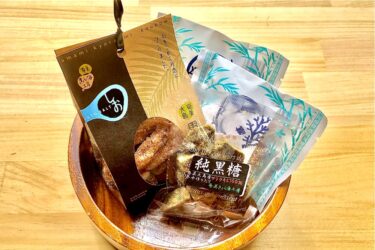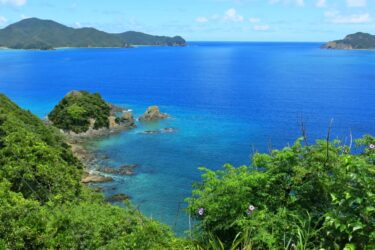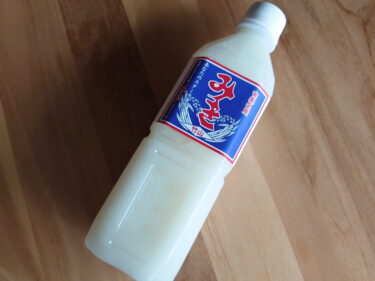Oshima tsumugi is a highly regarded textile!
Oshima tsumugi is a textile produced mainly on Amami Oshima Island in Kagoshima Prefecture. It is a traditional Japanese craft with a long history of about 1,300 years, and is one of the world's three major textiles along with Persian carpets and French Gobelins fabrics. Since Oshima, Yuki, and Shiozawa are known as Japan's three major silk fabrics, many people in Japan are probably familiar with Oshima tsumugi as a high-quality textile.
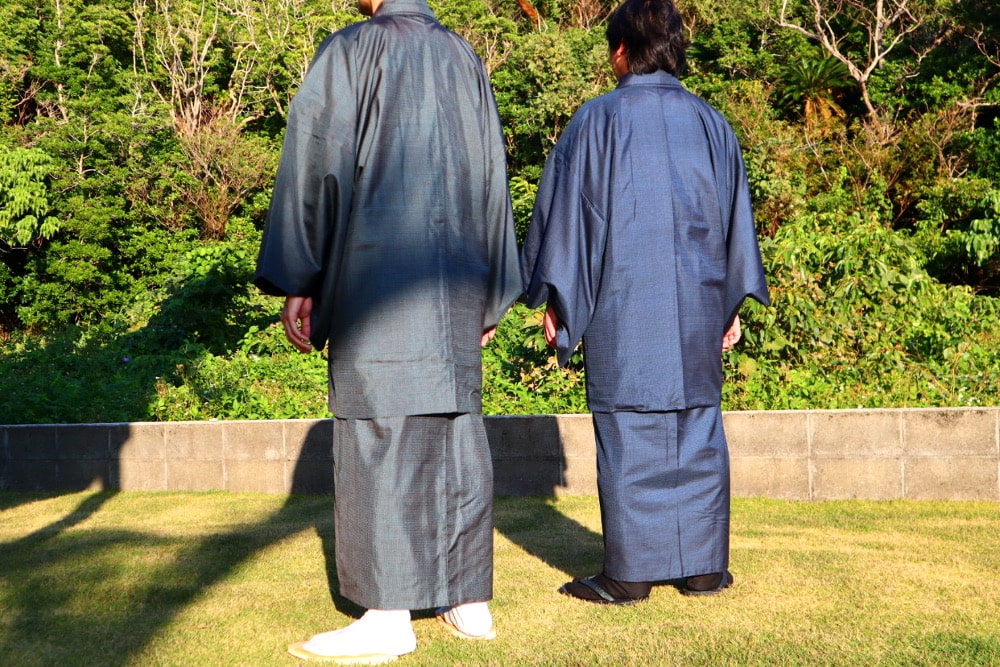
History of Oshima Tsumugi
Oshima tsumugi originated in Amami Oshima. It is not known for certain, but it seems that early Oshima silk was woven using hand-silk yarn for private use and worn by the islanders as daily wear. In the Shosoin, there is a description that "a reddish-brown kimono was offered from the south", and it is thought that the culture of mud-dyeing had already taken root in Amami Oshima 1,300 years ago. The technique was gradually refined, and in the Edo period (1603-1867), it was designated as the top delivery to the Satsuma clan. From the early Meiji period (1868-1912), Oshima silk was manufactured as a commodity, and in the Taisho period (1912-1926), it was established as a modern Oshima tsumugi made with genuine silk kneaded yarn.
Characteristics of Oshima Tsumugi
Oshima tsumugi is characterized by its warm colors, luster, delicate patterns, and supple, lightweight comfort. Its unique deep color, almost black, creates an elegant atmosphere. In the Edo period, Oshima tsumugi was made from spun threads of cotton and other materials, but according to the current definition, Oshima tsumugi is only made from 100% silk. Therefore, it has the image of a luxury item, but it is actually suitable for everyday wear as it is thin, durable, and extremely long-lasting.
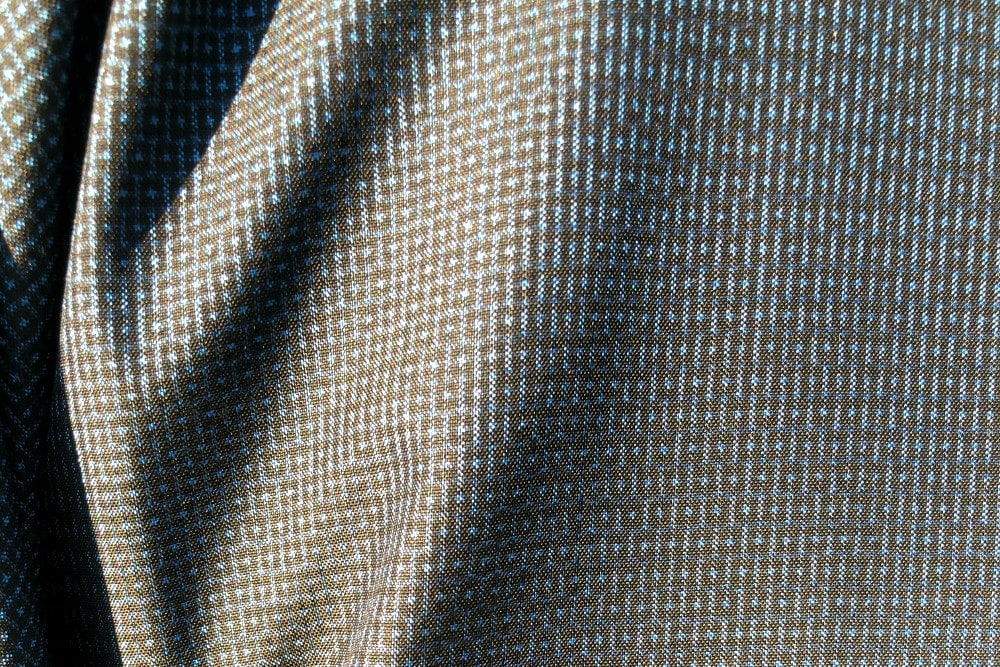
Patterns
Natural flowers and plants are frequently used as motifs in Oshima tsumugi patterns. One of the representative classic patterns is the Ryugo pattern. The design is centered on the leaves of cycad, which grows wild in Amami, and the back of a habu, and is used for women's kimonos and other garments. The pattern is difficult to express by machine weaving and requires a high level of skill, but it is widely supported because it matches modern sensibilities. On the other hand, the turtle shell pattern is often used for men's kimonos and accessories. It is an auspicious pattern associated with the turtle, a symbol of longevity. The basic pattern is a simple one of joining hexagons, but various arrangements are made by the creator, such as combining it with a pattern of plants and trees.
Made with a lot of time and effort
It takes more than 30 processes and six months to a year to make one Oshima tsumugi. Here is a brief introduction of the production process of Oshima tsumugi.
first weaving
In ordinary textiles, weaving is done only once, but Oshima silk has two weaving processes before it is finished. The first weaving process before dyeing the threads is "kasuri jime".
Cotton yarns are woven into the parts of the pattern made with silk yarns that will not be colored, according to the design of the finished shape and color tone. The silk threads woven with cotton threads are called "Kasuri Mushiro," and the cotton threads are unraveled after dyeing.
stain
Kasuri Mushiro is repeatedly blanched and soaked in the infusion solution of a plant native to the Amami area called "Teachigi (Sharimbai)" and iron-containing muck. Repeated chemical bonding of the raw silk protein, tannin acid pigment in the teich wood, and iron in the muddy soil gives the raw silk a deep black color that does not fade. This dyeing method using teich wood and muddy soil is called "Doro Oshima," but there are many other dyeing methods for Oshima silk. There are many other ways to dye Oshima tsumugi, including "Dro Ai Oshima," in which indigo-dyed kasuri yarn is dyed with teichi-wood and mud; "Kusakizome Oshima," which uses plants and trees other than teichi-wood; "Shiro Oshima," which uses yarn dyed or undyed with kaolin (white soil); and "Iro Oshima," which uses chemical dyes.
second weaving
The next step, weaving the dyed yarn, is very complicated. Because Oshima silk is yarn-dyed, the warp and weft yarns must be matched without error during the weaving stage to create the pattern. High skills are required to produce the beautiful kasuri (a pattern in which the yarn-dyed yarn is mixed with the non-dyed yarn) that is a characteristic of Oshima silk. These processes are not done by a single person. Many craftsmen add their hands to each process like a relay, and everyone works together to create a single piece of work.
Oshima tsumugi, created through many processes, is supple and strong, and is said to be worn as a kimono for 150 to 200 years. The fabric, which took a lot of time and effort, is only recognized as authentic Oshima tsumugi after passing strict inspections by the local associations of each production area.
Evolving Oshima Tsumugi
Today, various traditional crafts face the problem of passing on their culture to young people. Oshima tsumugi is no exception. However, efforts are being made to rearrange Oshima tsumugi into a form that is suitable for the modern age and to make its appeal known in a new way. Recently, not only kimonos but also clothing, neckties, book covers, and other accessories are being made using the Oshima tsumugi technique. For those who do not have a chance to wear kimono, it may be a good idea to start with Oshima tsumugi accessories.
Summary
Oshima tsumugi has an image of luxury because of its careful craftsmanship, but it is also a durable, beautiful, and easy-to-use textile for daily use. It is not only beautiful to look at, but also highly functional.


